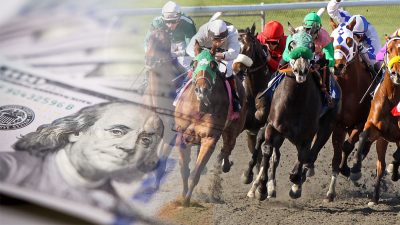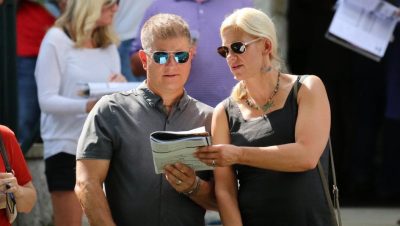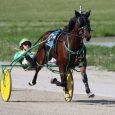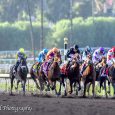By Ray Wallin
As I have grown older, I have broken out of my introverted shell, especially when I am at the track and have time to kill between the races I am planning to play. Whether I am talking to a beginner level handicapper or someone who makes their living playing the races, I always like to ask how they got hooked on the sport and what harsh reality did they face as they dove into handicapping.
The first part of the question generates a lot of similar answers. A lot of folks grew up around the sport. They had a friend of the family that owned a horse or knew a trainer. Some were lucky like myself and had an uncle that schooled them over the course of a misspent teenage summer on the art of handicapping. Other folks enjoy the challenge of trying to beat the game.
The answers to the second half of that question are much more intriguing.
On paper it almost sounds easy. Pick the fastest horse and make money, right? Sure, the once-a-year player may get lucky playing their lucky number or the color silks they like the best, but overall, it is much more complicated than that. Below are some of the most memorable answers I have heard and the advice I gave back.
There is no magic figure

Horse Betting Bankroll: Tips To Keep Funds In Great Shape
Every serious handicapper creates some sort of figure or plays with numbers to arrive at their contenders for a given race. I create my own pace based speed figures. They lose money if they bet blindly, as do Beyer speed figures, Brisnet speed figures and prime power figures, and any figure that is widely distributed. Every professional gambler I know has figures that would burn through their bankroll if blindly played on every race.
Handicappers are modern day alchemists. We try to find a way to take a mountain of data, hit the “easy button” and have it result in something that tells us what to play in every race. I know I haven’t found that magic figure and if someone did, they wouldn’t tell anyone about it.
The key is to find under what conditions your figure or angle excels. While I use my pace based speed figure as a tool in every race, but weighted differently by condition, I have found that in allowance races on the turf it outperforms every other condition (both routes and sprints). The sample size is large enough to support this with a strike rate over 40%. It also performs well in maiden claiming routes over the dirt. In both cases I consider this factor more than in other race conditions.
While there is no magic figure that I have ever found, it isn’t going to stop us from looking for one. Track the results and exploit the best profitable opportunities that present themselves as a result.
The amount of information can be overwhelming
One afternoon at a neighbor’s barbeque a friend of mine, Curious Jim, brought out a copy of the program he picked up at Monmouth Park one Saturday afternoon. He asked if I could explain what the numbers and abbreviations meant and how he could use that to pick winners and make money the next time he stopped by the track.

Monmouth Park – Photo Courtesy of www.MonmouthPark.com
After snorting my adult beverage through my nose at the prospect that I could teach him how to handicap and make money at the track between the time the hamburgers needed to be flipped, I figured I would at least explain the basics.
As I started to explain the conditions of the race, I could tell I was losing him. ‘So, you mean the horse can be 3 years old and run or if they are older, they need to not have won how many races that are over what amount?” We hadn’t even gotten to the running lines yet. This was going to take at least two beers to explain.
A lot of new handicappers are intimidated by the amount of information that is presented to them with each horse and the conditions of the race. While most of the information is consistent between different past performance providers, there are subtle differences. I recommend picking a past performance that you feel comfortable with and learning what each symbol or figure represents. Realize that not every piece of information will be valuable in selecting your contenders of a given race.
Sometimes you need to ask yourself, does it matter who the sire is of that 12-year-old gelding that is running in a bottom level claiming race at Penn National with 135 career starts?
Sometimes your best (or only) play will scratch
Have you ever handicapped a race and found the perfect play? He checks every box. The horse has the best figures, meets several key angles, and the pace sets up perfectly for him. You are ready to unload twice your normal unit size play on him. He looks to bring you some value too, he’s not 1-9 like other stand outs, but rather a sweet 5-1 morning line. You built an exacta and trifecta around him. You are keying him in the late Pick 4. You can hardly sleep the night before.
When you get to the track you have pep in your step as you bound through the gate. You are going to make a ton of cash today, until you hear the track announcer run through the scratches. Normally this wouldn’t be an issue but clear as day you hear him say that your horse has scratched. This scratch dashes your hopes and dreams for the day. If it wasn’t bad enough that your play scratched, he was your only play of the day and now you wasted your time, gas, and tolls to get to the track.
Now you have two options if you stay. You can resolve yourself to enjoy the sunshine and use it as a learning experience or you try to salvage the day by playing a few plays you don’t feel great about.
By now you know how this story ends if you decide to force the action. You’ll feel like you got kicked in the teeth after missing almost every play. So, stay disciplined and don’t force the action. Choose wisely and chalk the day up to being a learning experience in person and enjoy the sunshine and ambiance of being trackside.
There will be races that leave you scratching your head
You know your handicapping is sound, but sometimes a race sets up nothing like you expect. How could that 99-1 shot take the field wire to wire after not beating a since horse in any

Handicapping – Photo courtesy of Penelope P. Miller / America’s Best Racing
of its running lines? Why did your speed horse not fire or your closer have no life when they hit the top of the stretch?
As my late Uncle Dutch would say, “horses are people, too.” Like us, horses have good days and bad days. Sometimes you can tell by the way they are walking or read signals from how they move their tails, ears, or by a good look at their eyes. Yet you can’t read their mind to know if they feel like racing or not that day, regardless of the urging the jockey will give them.
You will need to accept that there is no explanation. We are basing our decisions on numbers in a program and a couple minutes of seeing the horse in the paddock.



